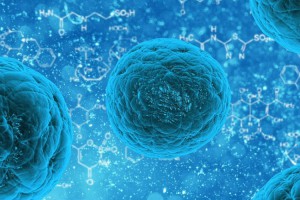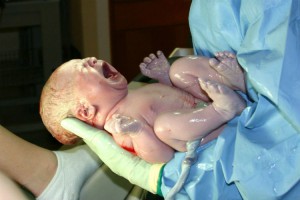Over the past several years, the subject of stem cells from umbilical cord blood has been very popular. Significant steps have been taken, and new discoveries have shown the positive impact of using stem cells in treating different diseases (that were previously incurable) and heal damaged tissues and organs. The list of diseases that can be treated with stem cells is already very long. More than 75 diseases have involved transplantation, and the list grows every year as new research is revealed: different cancers, type-2 diabetes, Alzheimer’s disease, Parkinson’s disease, heart disease, cerebral palsy, etc.
The importance of stem cells has been known for many decades, so it is not new. Studies in the 1950s through to the 1980s indicated the potential of using stem cells, revolutionising science. The first successful stem cell transplants occurred in 1988. Today, thousands of umbilical cord blood transplants occur around the world, mainly for children.
Today, around the world, there are more than 50 public umbilical cord blood banks. Their role is to supply stem cells as a collective resource to people who need transplants.
At the basic level, humans are made up of stem cells, also called master or MOTHER cells, which is perfectly apt for a website about new and future parents! 😊
What is a stem cell?
According to different authors I consulted, the definition of a stem cell is as follows:
“Stem cells are non-differentiated, unprogrammed cells that differentiate into other kinds of cells to renew specific cells to ensure the development of tissues and the proper functioning of specific organs.”
The Role of Stem Cells
Stem cells play a role that is essential to life. They renew, divide, multiply and give birth to different types of cells necessary for the human body and its proper functions. That can develop indefinitely and restore and replace damaged tissues and even heal specific health problems in the brain, blood, skin, eyes, intestine, etc. Each tissue in the human body is made up of distinct cells.
Stem cell developments are based on research in biomedicine, searching for different ways to regenerate diseased, aged or damaged tissues.
Stem Cell Origins
After fertilisation, to ensure the proper development of the embryo, the cell division process starts due to stem cells. There will be more than 250 types of cells formed with different distinct functions in the human body’s systems: blood, intestinal, neurological, etc. So stem cells are the foundation of every person after conception, and are found in every human being.
In adults, stem cells are mainly produced in the bone marrow and help renew red and white blood cells and platelets that make up the blood. There are lower quantities of stem cells in blood circulation, and a higher concentration is found in a newborn’s umbilical cord.
Stem cell transplants can be vital for people who are suffering from a bone marrow problem, as their blood components depend on it. Stem cells can become a replacement solution for many serious diseases.
But there is a significant difference between stem cells from umbilical cord blood and those found in adults.
Stem Cells in Umbilical Cord Blood
Research has shown that blood from the umbilical cord contains a high level of stem cells. They have the extraordinary ability to transform into specialised cells based on the environment they are found in. For example, if I take umbilical cord blood and I inoculate the sample in a compatible person’s brain, the stem cells can create new, healthy, functional brain cells to repair or restore damaged tissues. Amazing!
The value of unprogrammed cells like those in the umbilical cord is that they will differentiate in the tissue its placed in. If the individual is compatible (brother, sister, parents, etc.), the body will not reject these cells. Stems cells placed in the liver will become liver cells, creating natural connections with the tissues surrounding them and adapting the organ’s desired function. This makes it a perfect, unique and ethically sound treatment because these cells are present and available after childbirth. Research has shown that umbilical cord blood collected after birth is as effective as using bone marrow during a transplant.
Storing Umbilical Cord Blood Stem Cells
If you want to store your baby’s umbilical cord blood stem cells or a piece of their cord for you and your family (personal use), it’s possible but only by working with private companies.
Only HIV and hepatitis B and C-positive donors are inadmissible. Ideally, you should start the process 6 weeks before the expected delivery date to have all the necessary material on time.
Public umbilical cord blood banks exist and are a possible solution to treat ill people. But you need to find a compatible donor, found more often in the family. About 25% of the family can be a compatible donor. When using a public bank, the success rate in finding a compatible sample within a 6 month period varies from 10-60%.
To meet the varied needs of the population, public banks need umbilical cord blood from babies with different ethnic origins.
Public banks have allowed for higher levels of transplants for people who were waiting for this procedure.
How are umbilical cord blood stem cells collected?
The baby’s umbilical cord stem cells have to be collected fairly rapidly after birth. If they aren’t, they will disappear in the blood circulation and will program themselves in the different tissues. The blood will be collected within minutes after childbirth (both vaginally and after a cesarean), and is a safe and simple procedure for both mother and baby. Taking blood from the umbilical cord won’t affect the baby, and will not harm the mother. The procedure is without risk and pain-free.
If you want to collect your baby’s umbilical cord blood for you or your family for future use, you have to purchase a kit from a private company. The kit contains instructions to guide the health professional. It takes between 3-5 minutes once the umbilical cord is cut and before the placenta exits. You should notify the medical team of your intentions to perform this procedure.
Costs associated with using a private company (collection of cord blood) are around $1,100 for one child ($1,800 for twins) and includes the kit, storage procedure, registration, shipping, etc. Then each year it will cost about $130 ($200 for twins) for storage. If you also want to keep a piece of the umbilical cord, it will cost more. Storage facilities are now found in Montreal, Toronto and in several other Canadian provinces. There are more than 100 private banks around the world offering this service.
Hema-Quebec’s Public Cord Blood Bank
Since 1996, Hema-Quebec has offered to store cord blood donations for a member of the immediate family who suffers from a disease a cord blood transplant could help. You should talk about this with your doctor during your pregnancy to start the process. Your donation will be directed, which means destined for use by a specific person after birth. There are no costs for this service.Depuis 1996, Héma-Québec
For the Quebec public cord blood bank, there is a list of partner hospitals (St-Mary, Sainte-Justine, McGill, CHUQ, Cité-de-la-Santé Laval, LaSalle, Sacré-Coeur, Lakeshore, Jewish General) designated for cord blood collection from consenting mothers who registered with the bank during their pregnancy.
Hema-Quebec is the organisation responsible for the public cord blood bank. Each blood sample collected is analysed and tested to validate quality before being stored frozen. It is then offered to people who are waiting for stem cell transplants. Frozen cord blood has a shelf life of at least 10 years, so it won’t lose its specific properties for transplants. The collected blood sample will be identified with a number. The donors and recipients remain anonymous.
Tests completed on blood samples are similar to those done on regular blood donations to ensure quality and safety. These include testing for potential infections (hepatitis B and C, AIDS, syphilis, cytomegalovirus, West-Nile, Chagas disease, etc.).
Who can donate to the public cord blood bank?
Here are the essential criteria established by Hema-Quebec for a woman to register with the bank:
- In good health;
- 18 years and over;
- Pregnant with one baby (not twins);
- Registered with the Hema-Quebec blood bank before her 36th week of pregnancy.
Information about the medical and genetic history of the baby’s parents and grandparents is also required and will remain confidential at all time.
The donor selection process involves filling out a qualification questionnaire and only takes 30 minutes. This formal process ensures both the safety of the future baby and the person who will receive the transplant.
Not all cord blood donations will be kept in storage. After the analysis, the selection process will mean that some samples will not meet quality criteria. These samples will be made available to researchers to continue their work in this field.
For more information or to register, go to Hema-Quebec’s website or call 1-800-565-6635 or (514) 832-5000, ext. 5353. You can also email them at [email protected].
Pour plus d’information sur ce sujet ou pour inscription, visitez le site d’Héma-Québec ou téléphonez au 1 800 565-6635 ou au 514 832-5000, poste 5253. Vous pouvez également écrire un courriel à [email protected].
Adult Stem Cells
Adult stem cells are rarer and have a limited capacity to differentiate or specialise. An adult stem cell will form cells for a specific tissue, such as blood, skin, liver, or bone marrow. I can’t take an adult blood stem cell and place it in the liver, because it is specialised for blood. It won’t work for the liver, in contrast to a newborn’s cord stem cell which will adapt. This shows the huge importance and versatility of umbilical cord blood stem cells.
Summary List of Diseases
This is a summary list of diseases by the affected system which can be treated with umbilical cord blood stem cells. But I strongly advise you to start by talking with your doctor for more details. They are better placed to evaluate your request and inform you how scientific developments have changed over time. Their answer will be adapted to your personal history.
- More than 8 types of leukemia, both acute and chronic;
- Blood diseases: anemia, blood cell and platelet disorders;
- Metabolic disorders at birth: more than 7 syndromes, rare congenital diseases;
- Immune system disorders: ataxia, leucocyte deficiency, Kostmann syndrome;
- Lymphatic disorders: Hodgkin’s disease;
- Muscle disorders: acute myelofibrosis, thrombasthenia, myelofibrosis;
- Immune system disorders: Chediak-Higashi syndrome, granulomatosis;
- Plasma disorders: myeloma, leukemia, Waldenstrom disease;
- Others: breast cancer, Ewing sarcoma, neuroblastoma, retinoblastoma.
I hope this text has helped your reflection on a field that is advancing quickly. Stem cell transplantations have already changed the lives of thousands of people. Without stem cells, their pathologies could not have been cured. Even if umbilical cord blood stem cell research is still ongoing, we already know that they are promising for present and future generations.
Donating cord blood is a way to contribute to the health and survival of an ill person.
Talk soon,
Marie
The Baby Expert





